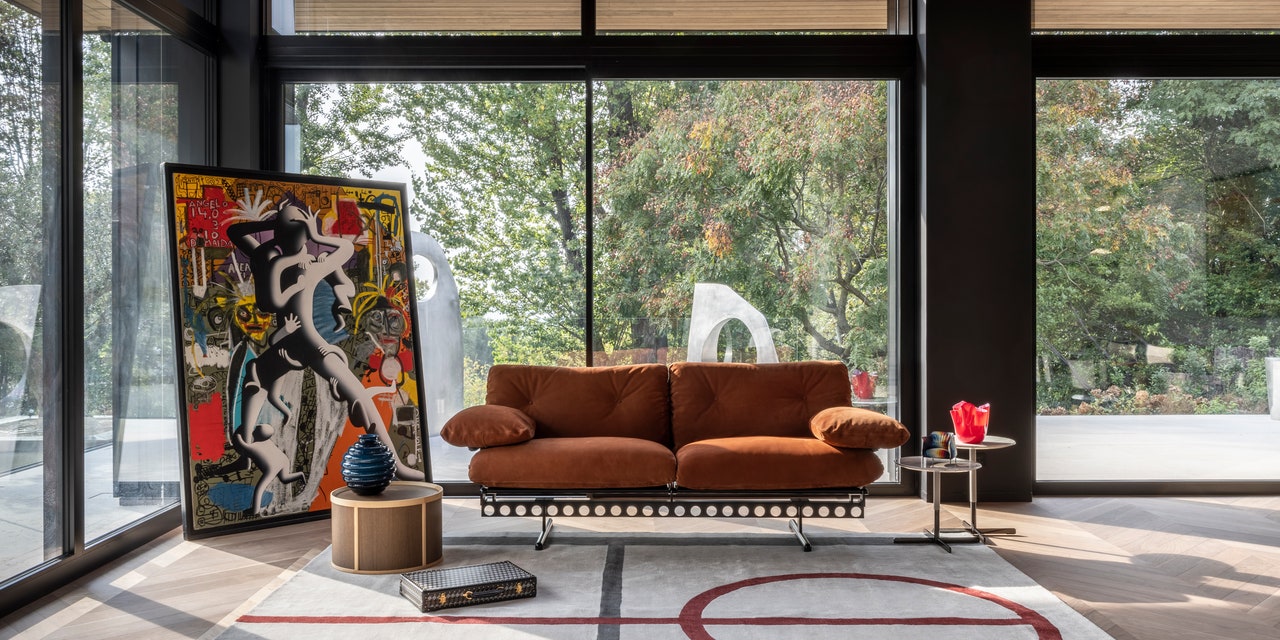Cutting-edge designs tend to be made with cutting-edge materials and processes, but when it comes to the end product, novel doesn’t always correlate to eco-friendly. In many cases the last century’s technological advancements have become this century’s environmental concern. So what, then, are we to do with the many celebrated furniture pieces that wouldn’t exist without these now inadvisable materials? As of late, a number of furniture companies have taken it upon themselves to update what goes into the making of their most beloved pieces.
Below, find five of our favorite iconic designs that have been reintroduced with eco-friendly materials.
Ouverture sofa by Pierluigi Cerri for Poltrona Frau
Forty years since it was first released in 1982, Poltrona Frau relaunched Pierluigi Cerri’s Ouverture sofa. The industrial seating has always been constructed with leather, but for its new version Poltrona Frau created it with Pelle Frau Velvety, a proprietary, suede-like leather varietal developed to reduce environmental harm. (It, unlike most leathers, isn’t tanned with chromium, a process that creates toxic wastewater and ultimately leads to a less durable leather.) With their new leathers, Poltrona Frau reduced its total use of chemicals by 15% without diminishing the beauty of the Ouverture in the slightest.
Componibili storage unit by Anna Castelli Ferrieri for Kartell
Perhaps one of the most recognizable versatile piece of the past half century, the Componibili was designed by Kartell cofounder Anna Castelli Ferrieri in 1969. While Castelli Ferrieri’s work was celebrated for its evocative use of plastics (and we can certainly still appreciate those designs to this day), Kartell launched a Componibili made of 100% natural bioplastic in 2019. The eco-friendly material is made from 80% agricultural byproducts, and the four pale hues the Bio iteration is available in are all water-based, making the piece fully biodegradable.
Le Bambole sofa by Mario Bellini for B&B Italia
It had been 50 years since the Le Bambole sofa’s Salone de Mobile debut in 1972 when Mario Bellini and B&B Italia adapted the design with eco-friendly materials. The viewer may not even notice what has changed—after all, it’s all internal. What was once a metal frame cushioned in polyurethane is now made of recycled polyethylene. “We have recovered its charm, its sumptuous floridity, its softness,” Bellini said in a statement at the time of the relaunch.

